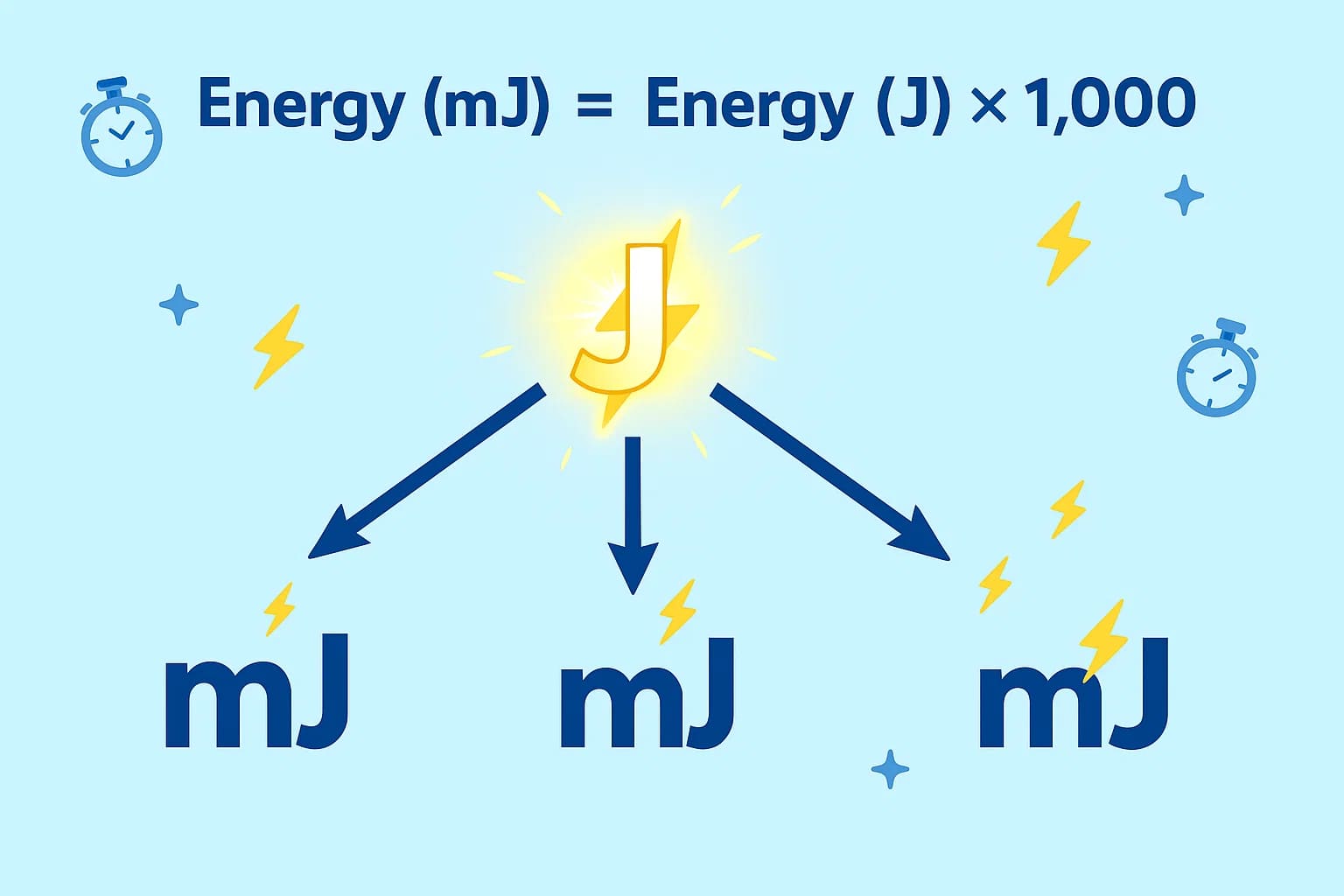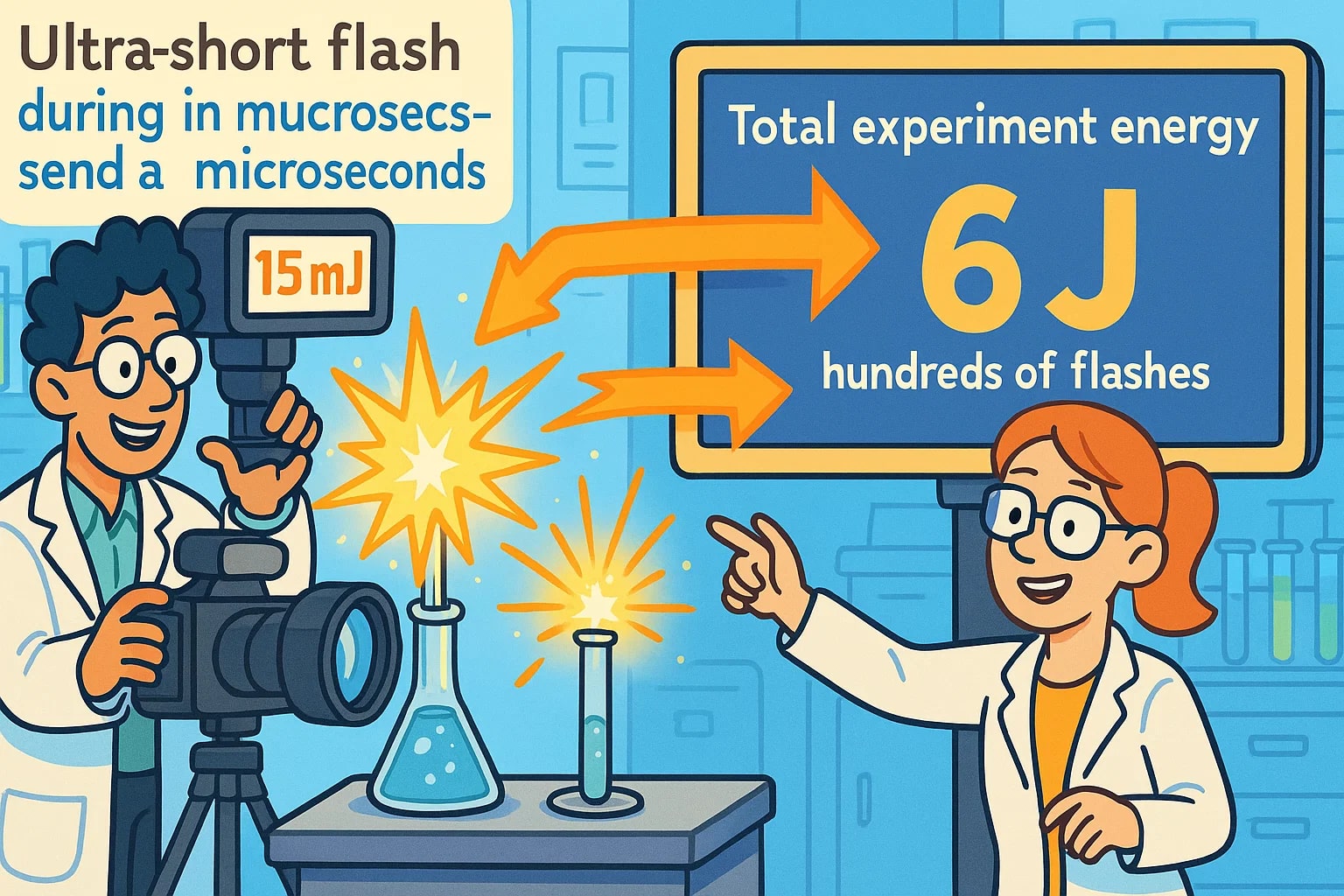millijoule to joule – How to convert mJ to J
The conversion from millijoule to joule is a simple move up the SI energy scale — multiply by 0.001. It’s commonly used in electronics, laser physics, and other fields where very small energy values are measured.
What is a millijoule?
A millijoule (mJ) is one-thousandth of a joule. It’s used for very small amounts of energy, such as in precise laboratory measurements, sensor outputs, or short laser pulses.
Formula:1 mJ = 0.001 J
This tiny unit is perfect for applications where even fractions of a joule matter.
What is a joule?
A joule (J) is the SI unit of energy, defined as the work done when a force of one newton moves an object one meter in the direction of the force.
Formula:1 J = 1 N × 1 m or E = ½mv²
It’s the universal reference for mechanical, electrical, and thermal energy.
How to convert millijoule to joule
The formula is straightforward:Energy (J) = Energy (mJ) ÷ 1 000
Example: If you have 250 mJ, then:Energy = 250 ÷ 1 000 = 0.25 J
For reverse conversion:Energy (mJ) = Energy (J) × 1 000
Run the numbers in a flash with our Energy Converter, and if your curiosity goes beyond millijoules and joules, dive into the complete Conversion Tools library for every unit you can imagine.

Do you know?
-
Millijoule fact: In ophthalmic laser surgery, energy pulses are often measured in millijoules to avoid damaging delicate tissues.
-
Joule fact: One joule equals the work done to lift a small apple (about 100 g) one meter against gravity.
-
Millijoule fact: Scientific camera flashes can discharge as little as 5 mJ of energy, enough to illuminate micro-scale subjects without overheating them.
-
Joule fact: A single lightning bolt can release over 1 billion joules — a staggering leap from millijoule values.
Capturing a Microsecond: The High-Speed Photography Lab
In a research lab, a team is photographing high-speed chemical reactions that happen in microseconds. To freeze these moments in time, they use ultra-short camera flashes, each delivering just 15 mJ of light energy.
Why so small? Too much energy could overheat or destroy the sample. The mJ measurement gives the team fine control, letting them adjust the output by just 1–2 mJ at a time.

Later, when they compile the experiment’s total energy use, they switch to joules for clarity. Across hundreds of flashes, the total came to 6 J — a neat, easy-to-read figure for the report.
This shift from mJ to J isn’t just about math — it’s about matching the scale to the purpose. The scientists need mJ for precision in the moment, but J for summarizing the project’s overall energy usage.
Energy Units That Match the Moment
The millijoule to joule conversion is a reminder that scale matters. In high-precision work, millijoules give you the exactness needed to make fine adjustments. Joules, on the other hand, provide a clear, universal measure for summarizing results, sharing data, or comparing across projects.
From medical lasers to lab experiments, and even in specialized electronics, knowing how to move between mJ and J keeps your work accurate and your communication clear. A quick division by 1 000 (or multiplication for the reverse) is all it takes — but choosing the right unit can make all the difference in how your data is understood.

